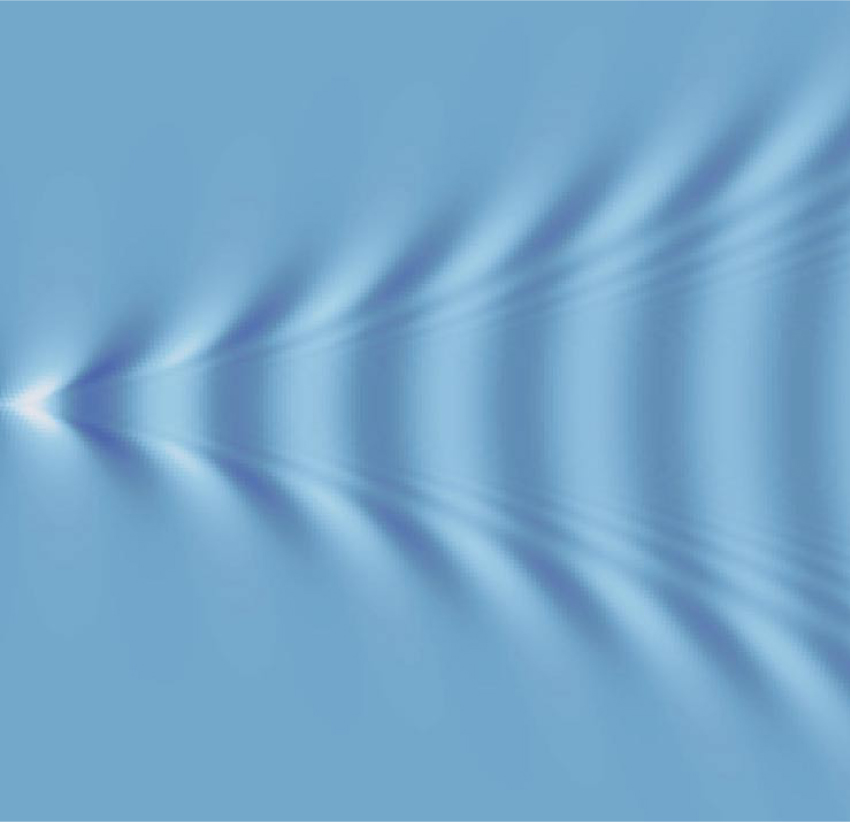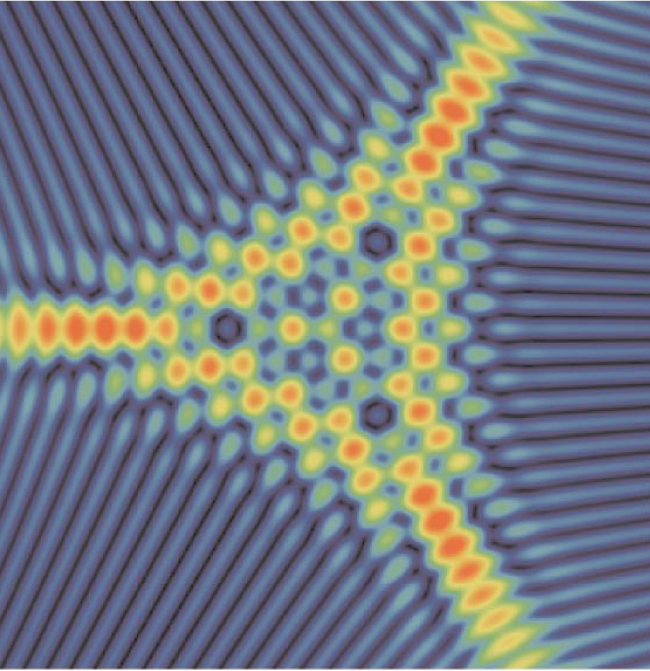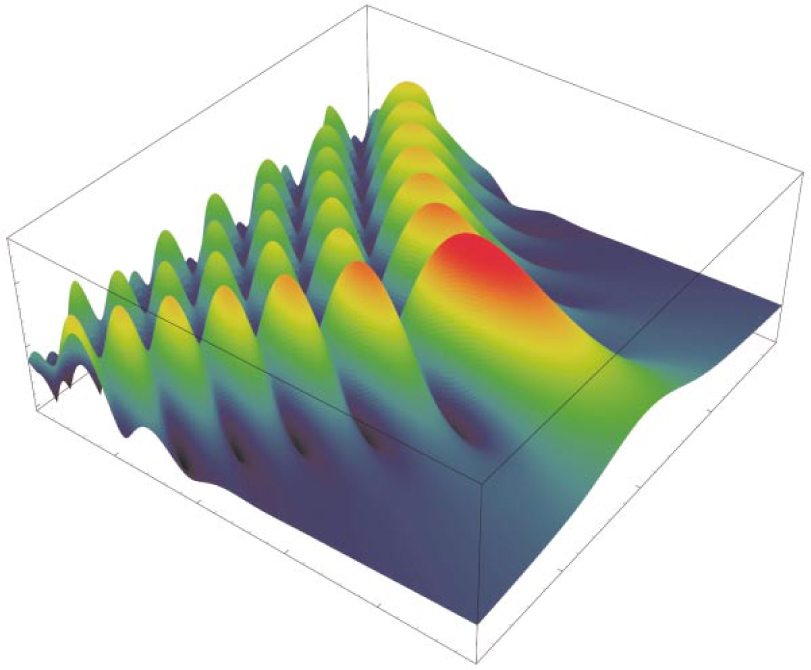Why are special functions special?
DOI: 10.1063/1.1372098

According to legend, Leo Szilard’s baths were ruined by his conversion to biology. He had enjoyed soaking for hours while thinking about physics. But as a convert he found this pleasure punctuated by the frequent need to leap out and search for a fact. In physics—particularly theoretical physics—we can get by with a few basic principles without knowing many facts; that is why the subject attracts those of us cursed with poor memory.
But there is a corpus of mathematical information that we do need. Much of this consists of formulas for the “special” functions. How many of us remember the expansion of cos 5x in terms of cos x and sin x, or whether an integral obtained in the course of a calculation can be identified as one of the many representations of a Bessel function, or whether the asymptotic expression for the gamma function involves (n +
Then in 1964 came Abramowitz and Stegun’s Handbook of Mathematical Functions (A&S), 3 perhaps the most successful work of mathematical reference ever published. It has been on the desk of every theoretical physicist. Over the years, I have worn out three copies. Several years ago, I was invited to contemplate being marooned on the proverbial desert island. What book would I most wish to have there, in addition to the Bible and the complete works of Shakespeare? My immediate answer was: A&S. If I could substitute for the Bible, I would choose Gradsteyn and Ryzhik’s Table of Integrals, Series and Products. 4 Compounding the impiety, I would give up Shakespeare in favor of Prudnikov, Brychkov and Marichev’s of Integrals and Series. 5 On the island, there would be much time to think about physics and much physics to think about: waves on the water that carve ridges on the sand beneath and focus sunlight there; shapes of clouds; subtle tints in the sky. … With the arrogance that keeps us theorists going, I harbor the delusion that it would be not too difficult to guess the underlying physics and formulate the governing equations. It is when contemplating how to solve these equations—to convert formulations into explanations—that humility sets in. Then, compendia of formulas become indispensable.
Nowadays the emphasis is shifting away from books towards computers. With a few keystrokes, the expansion of cos 5x, the numerical values of Bessel functions, and many analytical integrals can all be obtained easily using software such as Mathematica and Maple. (In the spirit of the times, I must be even handed and refer to both the competing religions.) A variety of resources is available online. The most ambitious initiative in this direction is being prepared by NIST, the descendant of the US National Bureau of Standards, which published A&S. NIST’s forthcoming Digital Library of Mathematical Functions (DLMF) will be a free Web-based collection of formulas (dlmf.nist.gov
The DLMF will reflect a substantial increase in our knowledge of special functions since 1964, and will also include new families of functions. Some of these functions were (with one class of exceptions) known to mathematicians in 1964, but they were not well known to scientists, and had rarely been applied in physics. They are new in the sense that, in the years since 1964, they have been found useful in several branches of physics. For example, string theory and quantum chaology now make use of automorphic functions and zeta functions; in the theory of solitons and integrable dynamical systems, Painlevé transcendents are widely employed; and in optics and quantum mechanics, a central role is played by “diffraction catastrophe” integrals, generated by the polynomials of singularity theory—my own favorite, and the subject of a chapter I am writing with Christopher Howls for the DLMF.
This continuing and indeed increasing reliance on special functions is a surprising development in the sociology of our profession. One of the principal applications of these functions was in the compact expression of approximations to physical problems for which explicit analytical solutions could not be found. But since the 1960s, when scientific computing became widespread, direct and “exact” numerical solution of the equations of physics has become available in many cases. It was often claimed that this would make the special functions redundant. Similar skepticism came from some pure mathematicians, whose ignorance about special functions, and lack of interest in them, was almost total. I remember that when singularity theory was being applied to optics in the 1970s, and I was seeking a graduate student to pursue these investigations, a mathematician recommended somebody as being very bright, very knowledgeable, and interested in applications. But this student had never heard of Bessel functions (nor could he carry out the simplest integrations, but that is another story).
The persistence of special functions is puzzling as well as surprising. What are they, other than just names for mathematical objects that are useful only in situations of contrived simplicity? Why are we so pleased when a complicated calculation “comes out” as a Bessel function, or a Laguerre polynomial? What determines which functions are “special”? These are slippery and subtle questions to which I do not have clear answers. Instead, I offer the following observations.
There are mathematical theories in which some classes of special functions appear naturally. A familiar classification is by increasing complexity, starting with polynomials and algebraic functions and progressing through the “elementary” or “lower” transcendental functions (logarithms, exponentials, sines and cosines, and so on) to the “higher” transcendental functions (Bessel, parabolic cylinder, and so on). Functions of hypergeometric type can be ordered by the behavior of singular points of the differential equations representing them, or by a group-theoretical analysis of their symmetries. But all these classifications are incomplete, in the sense of omitting whole classes that we find useful. For example, Mathieu functions fall outside the hypergeometric class, and gamma and zeta functions are not the solutions of simple differential equations. Moreover, even when the classifications do apply, the connections they provide often appear remote and unhelpful in our applications.
One reason for the continuing popularity of special functions could be that they enshrine sets of recognizable and communicable patterns and so constitute a common currency. Compilations like A&S and the DLMF assist the process of standardization, much as a dictionary enshrines the words in common use at a given time. Formal grammar, while interesting for its own sake, is rarely useful to those who use natural language to communicate. Arguing by analogy, I wonder if that is why the formal classifications of special functions have not proved very useful in applications.
Sometimes the patterns embodying special functions are conjured up in the form of pictures. I wonder how useful sines and cosines would be without the images, which we all share, of how they oscillate. In 1960, the publication in J&E of a three-dimensional graph showing the poles of the gamma function in the complex plane acquired an almost iconic status. With the more sophisticated graphics available now, the far more complicated behavior of functions of several variables can be explored in a variety of two-dimensional sections and three-dimensional plots, generating a large class of new and shared insights.
“New” is important here. Just as new words come into the language, so the set of special functions increases. The increase is driven by more sophisticated applications, and by new technology that enables more functions to be depicted in forms that can be readily assimilated.
Sometimes the patterns are associated with the asymptotic behavior of the functions, or of their singularities. Of the two Airy functions, Ai is the one that decays towards infinity, while Bi grows; the J Bessel functions are regular at the origin, the Y Bessel functions have a pole or a branch point.
Perhaps standardization is simply a matter of establishing uniformity of definition and notation. Although simple, this is far from trivial. To emphasize the importance of notation, Robert Dingle in his graduate lectures in theoretical physics at the University of St. Andrews in Scotland would occasionally replace the letters representing variables by nameless invented squiggles, thereby inducing instant incomprehensibility. Extending this one level higher, to the names of functions, just imagine how much confusion the physicist John Doe would cause if he insisted on replacing sin x by doe(x), even with a definition helpfully provided at the start of each paper.
To paraphrase an aphorism attributed to the biochemist Albert Szent-Györgyi, perhaps special functions provide an economical and shared culture analogous to books: places to keep our knowledge in, so that we can use our heads for better things.

Kelvin’S ship-wave pattern, calculated with the Airy function, the simplest special function in the hierarchy of diffraction catastrophes.


A cross section of the elliptic umbilic, a member of the hierarchy of diffraction catastrophes.


The cusp, a member of the hierarchy of diffraction catastrophes.

References
1. E. Jahnke, F. Emde, Tables of Functions with Formulae and Curves, Dover Publications, New York (1945).
2. A. Erdélyi, W. Magnus, F. Oberhettinger, F. G. Tricomi, Higher Transcendental Functions, 5 vols., Krieger Publishing, Melbourne, Fla. (1981) [first published in 1953].
3. M. Abramowitz, I. A. Stegun, eds., Handbook of Mathematical Functions with Formulas, Graphs, and Mathematical Tables, National Bureau of Standards Applied Mathematics Series, vol. 55, US Government Printing Office, Washington, DC (1964).
4. I. S. Gradsteyn, I. M. Ryzhik, Table of Integrals, Series, and Products, 6th ed. (translated from Russian by Scripta Technika), Academic Press, New York (2000) [first published in 1965].
5. A. P. Prudnikov, Yu. A. Brychkov, O. I. Marichev, Integrals and Series, 5 vols. (translated from Russian by N. M. Queen), Gordon and Breach, New York (1986–1992).
More about the Authors
MICHAEL BERRY is Royal Society Research Professor in the physics department of Bristol University, UK, and studies physical asymptotics.
Michael Berry. Physics Department of Bristol University, UK .
